- Home
- Blogs
10 Best PHP Frameworks To Use In 2020
A framework of PHP is an abstraction on what software that provides generic functions could be changed selectively through an added code that’s user-written and reusable. The PHP frameworks make quick development a reality and ease the burden that a PHP w

There’s no denying that PHP is the most popular server-side scripting language on the planet nowadays. Since its inception and first release, the programming language has evolved a lot. The demand for PHP web application development doesn’t show any signs of wavering.
The PHP language, for many years now, has been one of the most preferred when it comes to developing web apps and websites. While considered as a stable and secure programming language, it has also seen a fair amount of evolution since its first existence. As time passed, however, the complexity of websites has massively risen.
To build these complex websites, developers have to write hundreds of thousands of code lines, which is a cumbersome task. Developers should also have to start from scratch every time. This is where the frameworks of PHP come to the rescue, to help ease the job.
What is a PHP Framework?
A framework of PHP is an abstraction on what software that provides generic functions could be changed selectively through an added code that’s user-written and reusable. The PHP frameworks make quick development a reality and ease the burden that a PHP web development company has to handle when working on projects. Moreover, the frameworks provide a reusable and well-organized code.
Regardless if you’re a novice or an expert in developing websites, PHP always would assist in efficiently and swiftly accomplishing any project. There are tons of frameworks available nowadays, thus it might be confusing what to choose. This content provides you a brief view of the topmost frameworks of PHP to help choose the one that best fits your development requirements.
10 Top PHP Web Frameworks
1. Symfony.
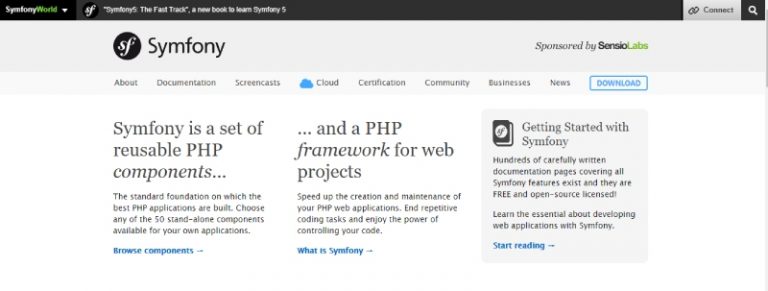
The framework, launched way back 2005 existed considerably longer than most in the business, which only goes to show that it’s most trusted by developers and organizations for over a decade now, maturing with its age. It’s an extensive framework and the only one that entirely adheres to the PHP and web standards.
The components of the framework are used by renowned CMS systems, including OroCRM, Drupal, and the PHP Bulletin Board. If you hire a PHP web developer, it’s the first choice because of the availability of reusable components and libraries, which accomplishes various tasks that includes authentication, the configuration of an object, templating, and so forth.
It turned out as perfect among all the other PHP frameworks, in terms of organization tasks that are huge-scale. The ecosystem furthermore is massive and supported by a programming community that’s very active, with tons of helpful online tutorials to get started.
2. Laravel.
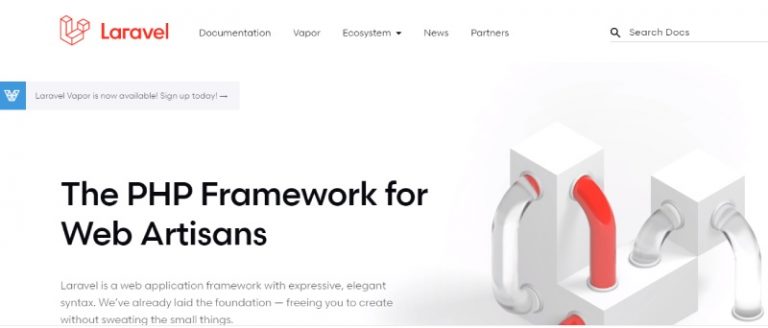
A new but hugely popular, if not the most popular framework of PHP. It has swept the framework space off its feet since its first release in 2011. Since then it has stayed on top of the charts for a while now. It furthermore streamlines the process of development through minimizing the intricacy of common tasks, which include sessions, queuing, routing, and authentication.
Moreover, developers opt for it due to its being able to offer a broad ecosystem, bringing immediate hosting, as well as a deployment platform, together with screencast tutorials hosted by the official website.
Other features include overloading capabilities with dynamic methods, robust encryption package, and tons of out-of-box functionality. To begin with, it’s easy to use the framework because of the availability of comprehensive documentation and lots of online tutorials.
3. Zend.
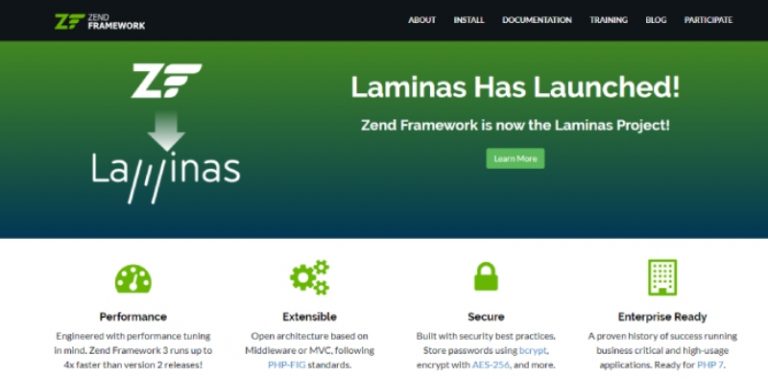
It’s extendable due to the interfaces and inheritance features. Built on the agile methodology that aims to deliver applications that are of high-quality to an enterprise level. It’s thoroughly object-oriented and was crafted keeping in mind security, speed, extensibility, and performance. It offers high customizability and stands with the top practices of PHP, which is extremely beneficial for developers.
It comes with an overabundance of components, like services, authentication, and others because of its concentration. However, even if it comes with numerous tools, still it’s not ideal for rapid app development.
The Zend packs feature include coding tools, easy to use drag and drop editor, scalable interface, and online debugging tools useful for complex sites. The framework, however, is considered as one of the hardest to learn, particularly for beginners.
4. CodeIgniter.
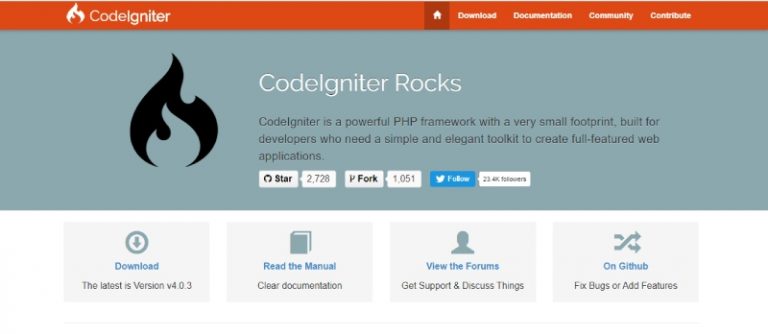
A lightweight framework is known for its hassle-free installation and small footprint, with minimalistic configuration prerequisites. Simple but powerful, the framework is a trifling 2MB in size that includes even the documentation.
It’s most suitable for the development of dynamic sites since it offers numerous prebuilt modules that help in crafting strong and reusable components. What adds to its massive popularity as well as the smooth working on dedicated and shared hosting platforms. It’s considerably faster compared to others.
The best choice when it comes to developing lightweight apps running on simple services because of its faster speed and robust performance. Other features include encryption steps, seamless security, negligible PHP adoption struggle, and easy handling of errors. One thing to keep in mind though is that the updates are somewhat spiked, thus may not be the best option for apps that demand a high-security level.
5. Slim.
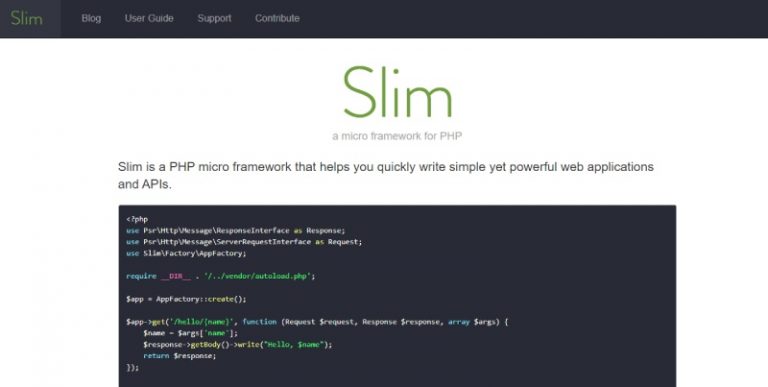
When you’re looking to build simple but powerful web apps, look no further than Slim. It’s a micro-framework and the idea behind it is for excellent small apps that don’t need the full-stack framework features. Although it’s by nature a minimalistic framework, it’s still full of rich features, which include client-side HTTP caching, session, routing, cookie encryptions, as well as support for ‘flash’ messages across HTTP requests.
It’s greatly used by developers aiming to develop RESTful services and APIs. The active user base as well as the constant updates and maintenance make it very user-friendly. It also has great tutorials for beginners.
6. FuelPHP.
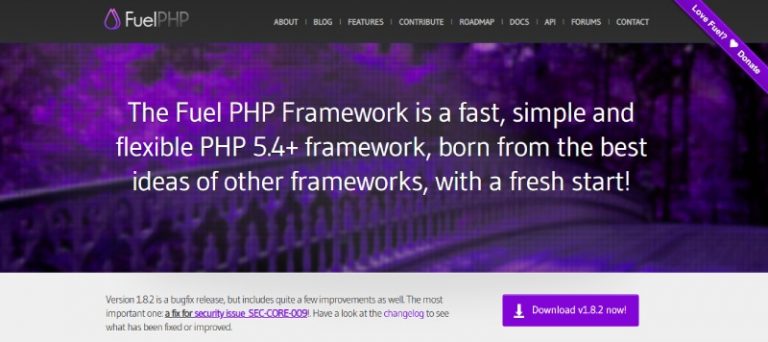
A PHP framework that’s extendable and flexible, and not restricted to the basic MVC or Model-View-Controller patterns, but with its successor, HMVC or Hierarchical-Model-View-Controller as well, at the architecture level. It has a voluntary class added as well, the Presenter class, or known previously as the ViewModel.
The security-focus of the framework handles concerns in using various features, such as input filtering and URL, along with output encoding. There are so many other features that come with the framework, such as a caching system, HMVC implementation, vulnerability protection, and a URL routing system. It’s apt for sending end-to-end web solutions of various complexities and sizes.
7. Aura.
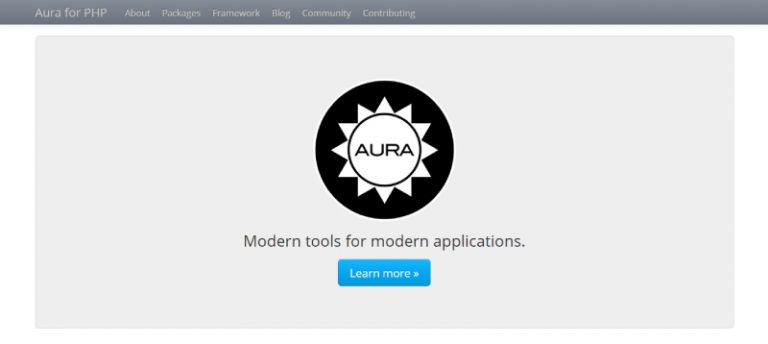
The framework, unlike other frameworks, is a collection of decoupled PHP libraries. It’s updated frequently and maintained, which is perfect for rudimentary apps. Every library is self-contained and could be used independently without dependencies on any project.
This enhances extreme flexibility, allowing developers to integrate various libraries required in projects swiftly and efficiently. The framework can be used by developers who go opt to write codes without dependency on a full-stack framework that’s opinionated.
8. Phalcon.
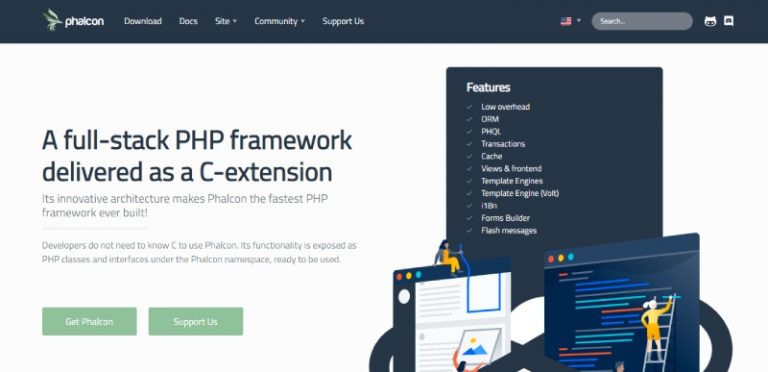
Written originally in C and C++ languages, it’s a full-stack framework. Basically, it’s an extension of C, but no worries in learning C. The most prominent feature is it’s being blazingly fast. This is due to the use of several resources, unlike other frameworks in the market.
For app developers, speed could be extremely critical, especially when working with systems that do not offer many overheads. Since 2012, it’s been updated continuously and has seen enough updates in the most current releases. The most current release as MVC, ORM, and caching components; also, it includes PHP 7 support.
9. CakePHP.
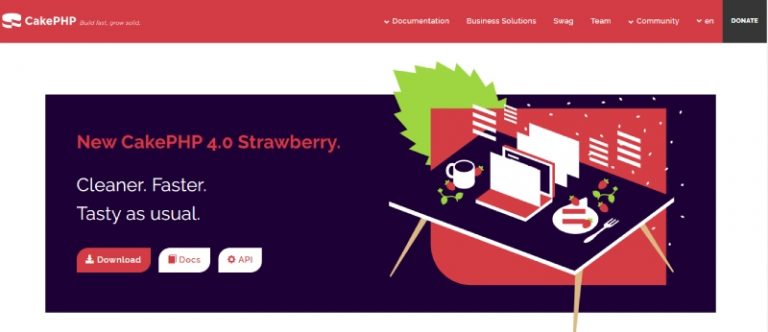
Although a decade-old framework, it’s still among the most popular frameworks today, simply due to its adaptation of the change and keeping up with the times. With every new version, it offered new features, which kept the user base strong.
The latest version introduced features, including enhanced modularity and a growing ability to build more standalone libraries. It’s also pretty straightforward and easy to install since it only requires a web server and a framework copy. It’s great for commercial app projects since it offers high-end security.
10. Yii 2.
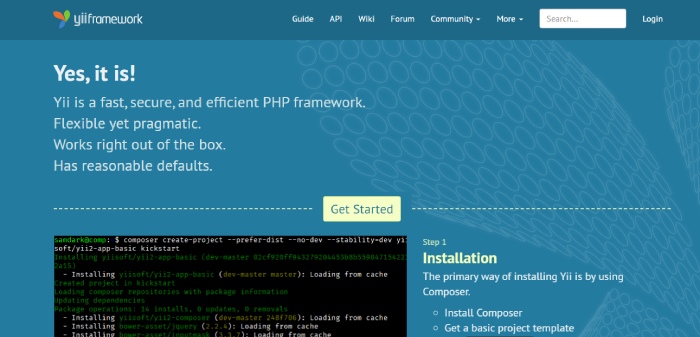
Based on the concept DRY or Don’t Repeat Yourself. It’s an object-oriented framework and success of the oldest PHP frameworks. It’s just right for big-scale web development since it could be integrated easily with the features of AJAX and jQuery.
Yii’s lazy loading technique makes it faster than other frameworks combined. It furthermore comes with a very powerful class code generator known as Gii, which function is to ease rapid prototyping and object-oriented programming. Other features are the availability of numerous security packages, a brief quick time of development, and configuration sets to speed up things.
Top Things you could do with PHP
Despite the immense popularity and use of PHP, there are however still business owners who are not aware of what the programming language is used for. The technology actually could do a lot of things.
1.Combine PHP and Cloud in the web app. Providing world-class data access is best when you integrate with the cloud. Since the cloud is a major web app development trend, it’s growing as a milestone among organizations, and driven to integrate cloud infrastructure.
Organizations have realized cloud computing’s potential benefits. Therefore, PHP development tools as well as cloud computing is quickly picking up speed. Most web and app development firms make use of both cloud and PHP for instilling together the benefits.
2. Accelerated Mobile Page integration. The accelerated mobile pages of Google boost search websites and mobile apps results, which could lower conversion rates by up to 7 percent. To minimize this concern, the open-source initiative was created, so publishers could boot the page speed. PHP web app development thus excels in integrating AMP for rendering mobile and boosting revenue.
3. Better session handling and cookies. A major project nowadays is web cookies, since they offer the de facto standard to keep open the login sessions. Handling login sessions that are cookie-based is seamless with PHP, because of its session mechanism prominence.
Developers always love the fact that they need not worry about cookie details, such as the beginning and closing sessions. The major benefit is—ease. Furthermore, the management of cookies is possible on your own to ensure better apps security, which you could do yourself. You could encrypt and store the cookies without having security threats.
4. Building an Instagram filter for images. There are more than 200 million account users of Instagram looking and browsing at pictures each and every second of the day. The popularity is due to the image filters, which are creating a frenzy among its users.
If you strive to create an image processing or social media site, PHP for editing could be a great choice. Imagick, a native PHP extension could be used in modifying and creating an image.
5. Website Cyber-Security Integration. Who wouldn’t want the finest security feature for a site? The majority of companies have faced attacks on their websites. Always, websites are easy targets, thus it’s critical to add high-quality security features.
These days, the development tools of PHP are being integrated with sturdy cybersecurity mechanisms to put a halt to attacks, preventing website risks. The tools let you add high-quality security features.
6. Effective and faster eCommerce development. Creating an eCommerce website from scratch could be arduous and complicated. Furthermore, it used to take so much time. Nonetheless, with PHP, the task is not daunting anymore. It offers amazing benefits for those well-versed in integrating existing eCommerce solutions.
You can altogether implement the PHP framework, rather than having to write code from scratch. The advanced frameworks could be readily accessed for eCommerce apps. Additionally, it is efficient and seamless to make an eCommerce website via PHP. The scripting also ensures effective web pages.
7. Craft CMS Systems. Business organizations have indeed various needs and requirements when it comes to content management and data. One of the basic needs for managing and updating website content are CMS systems.
An interactive CMS lets you update a website and add content via some seamless screen clicks. You could secure a user-friendly CMS with this technology.
Conclusion
There is indeed great ease for developers who use the best PHP frameworks mentioned earlier. The frameworks have comprehensive documentation, which could help to comprehend the ways of creating web applications.
Author Bio
Rooney Reeves is working as a Business Development Executive at – eTatvaSoft, a PHP Development Company. She always accepts challenges and puts some effort into it. She loves to write and spread her knowledge through writing. Follow her on Twitter.

